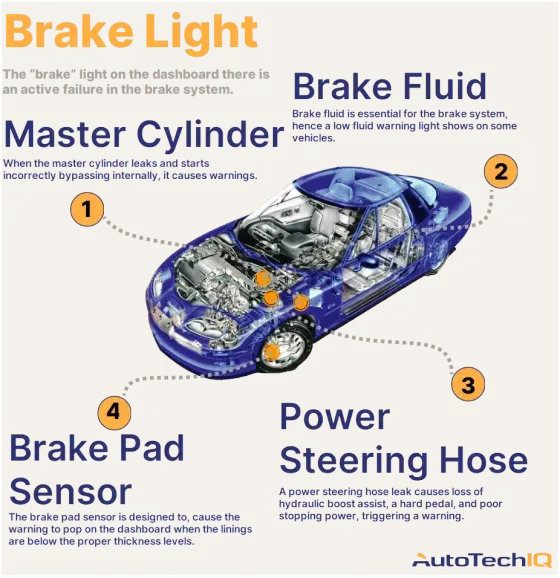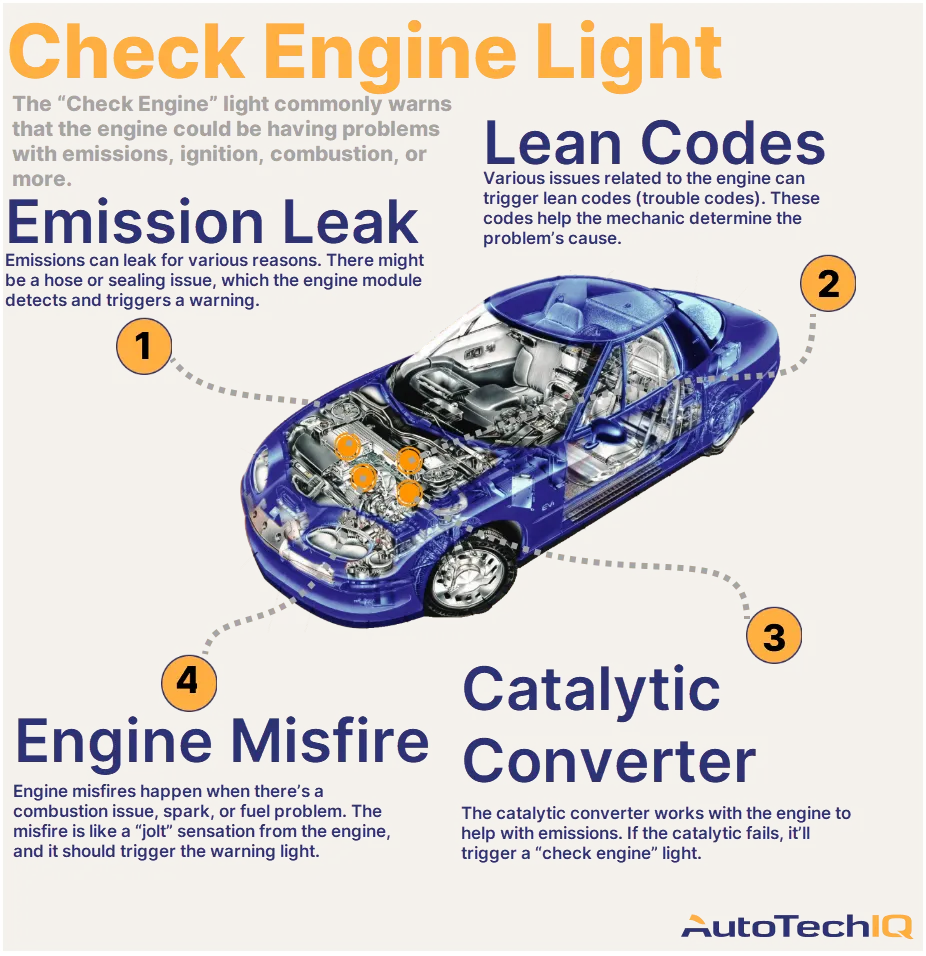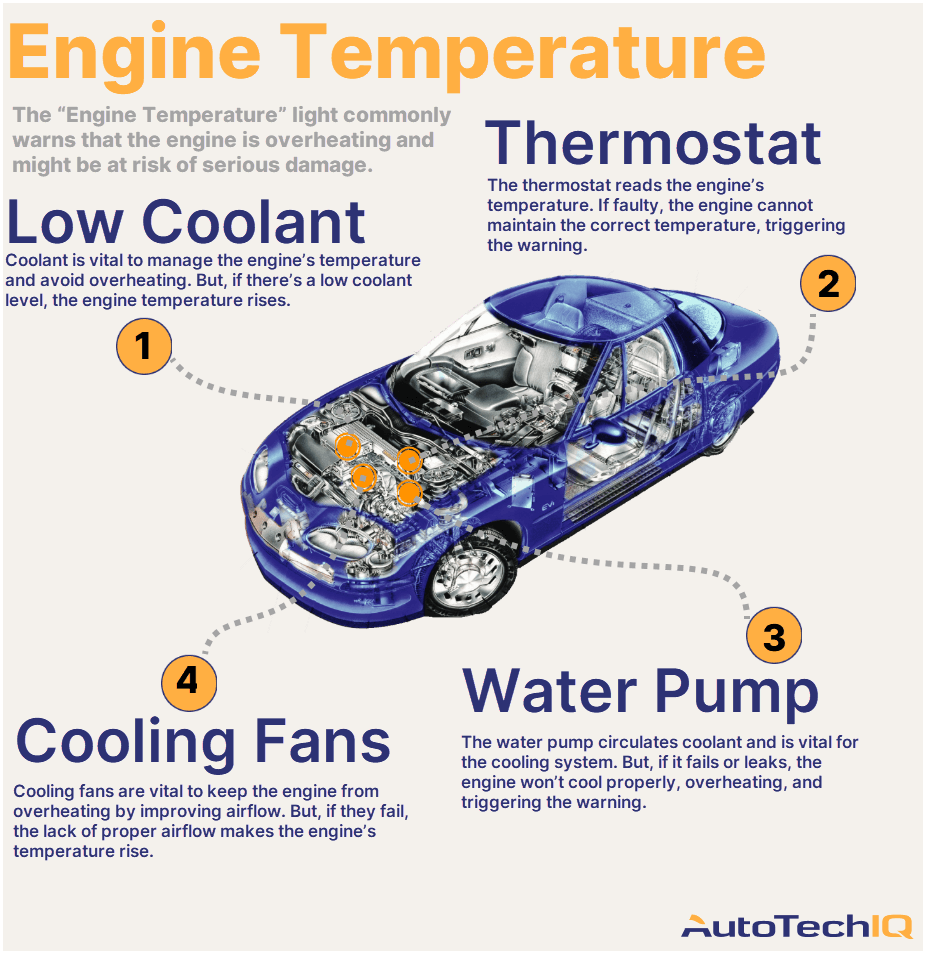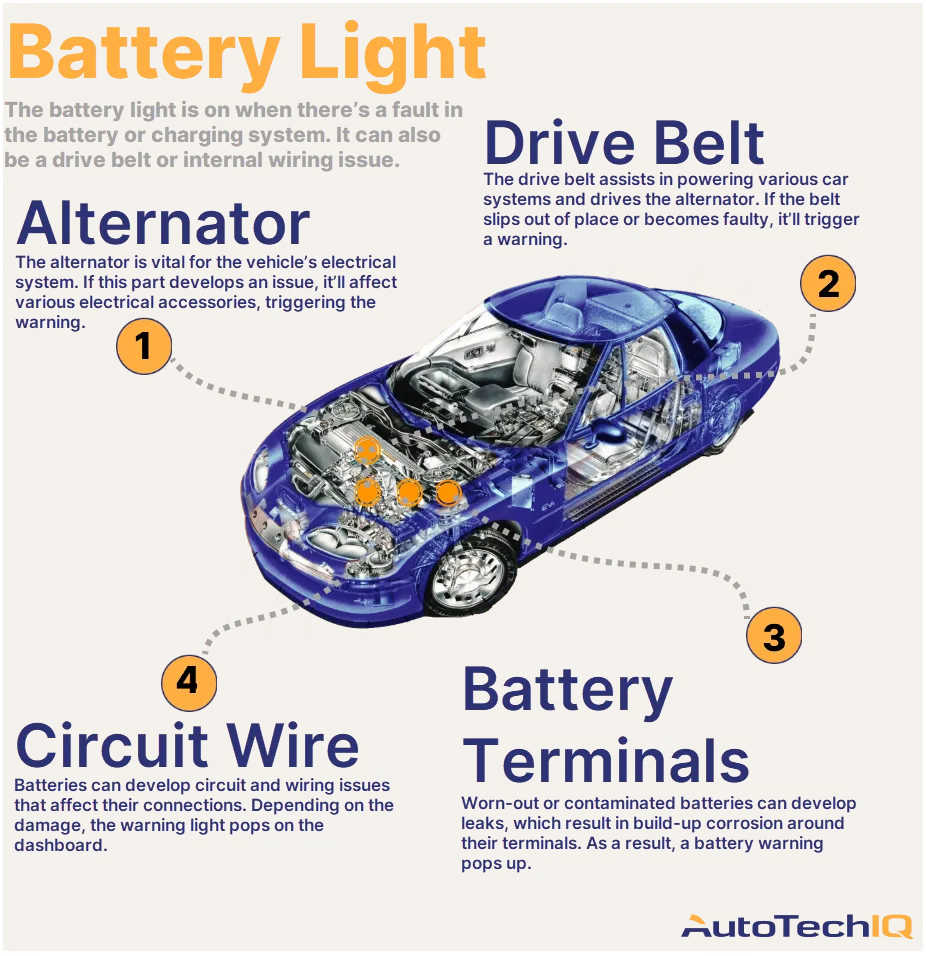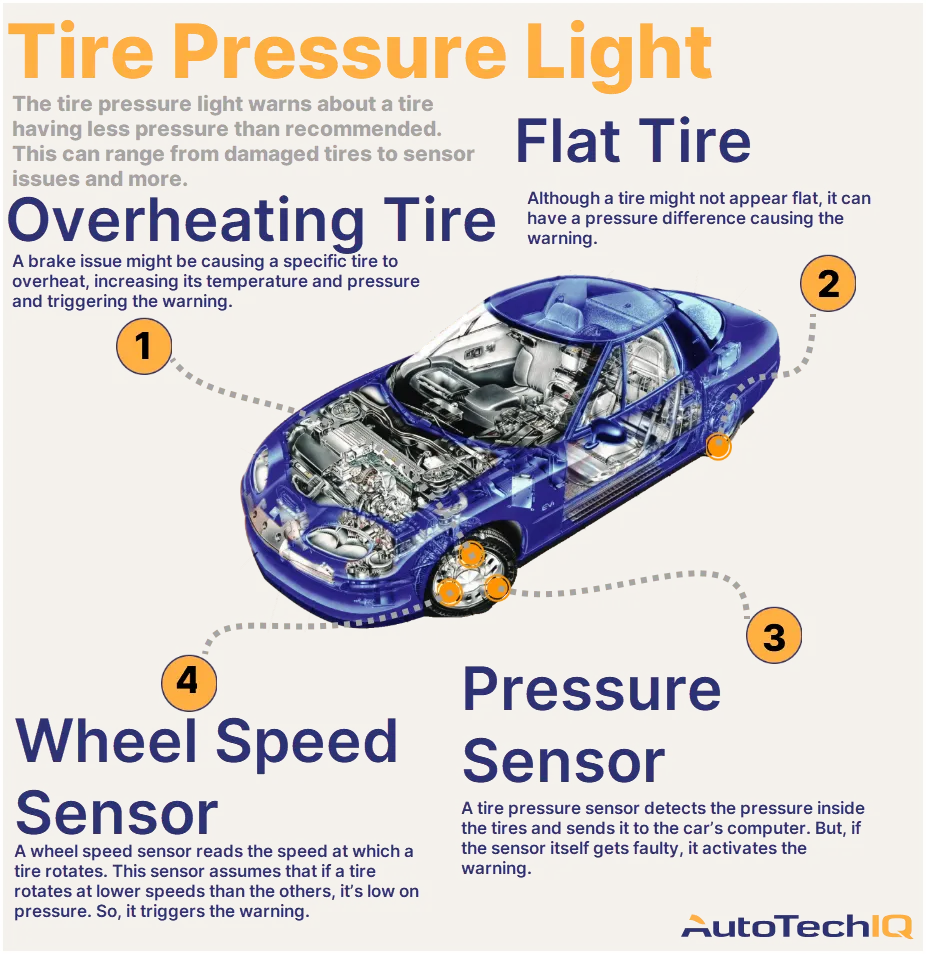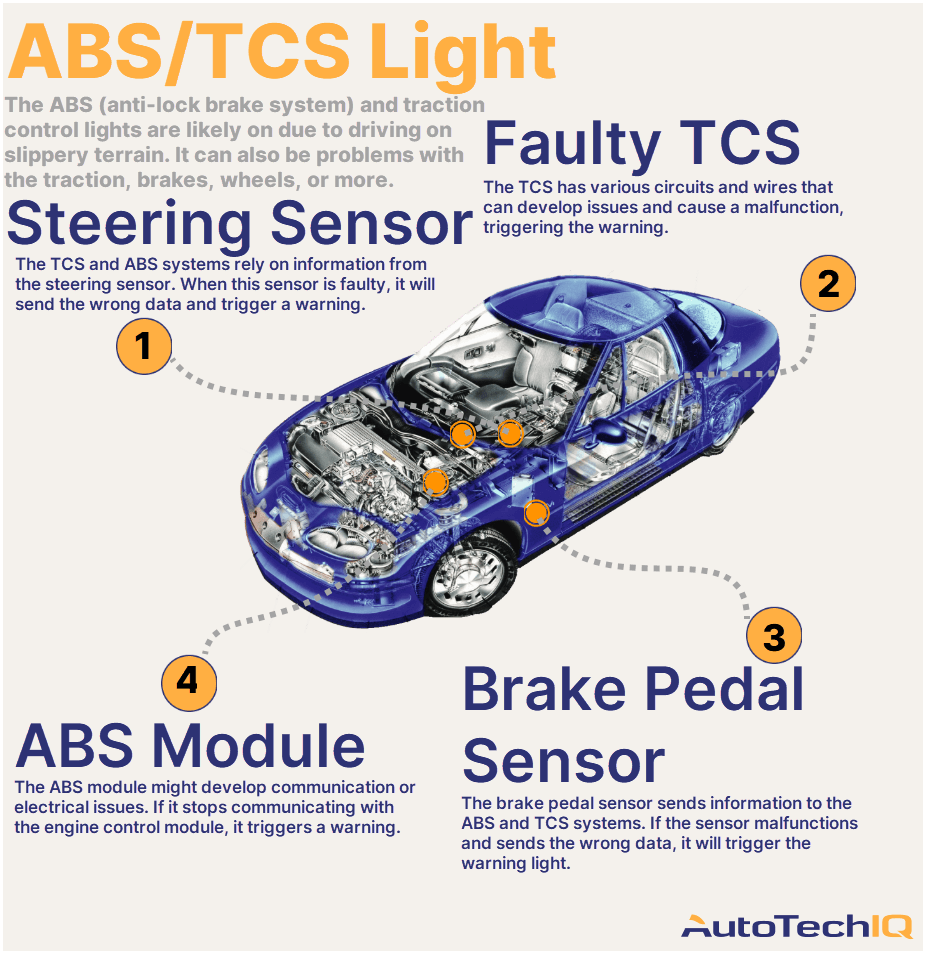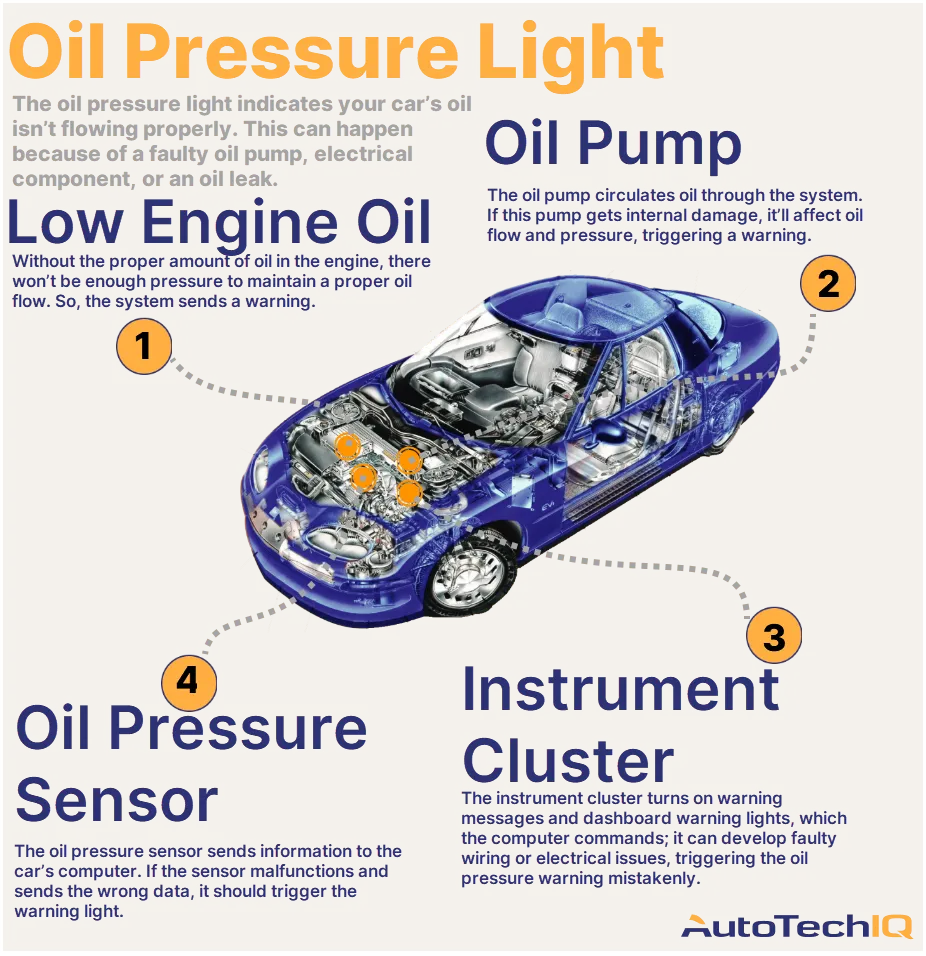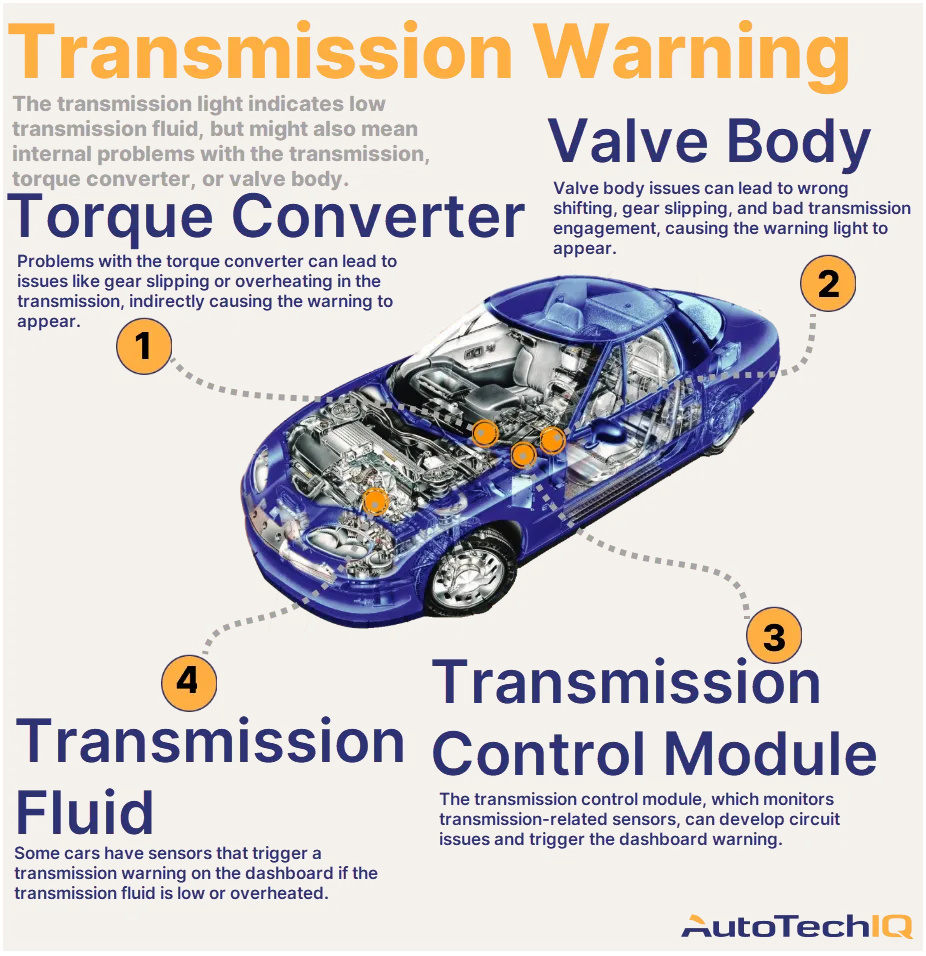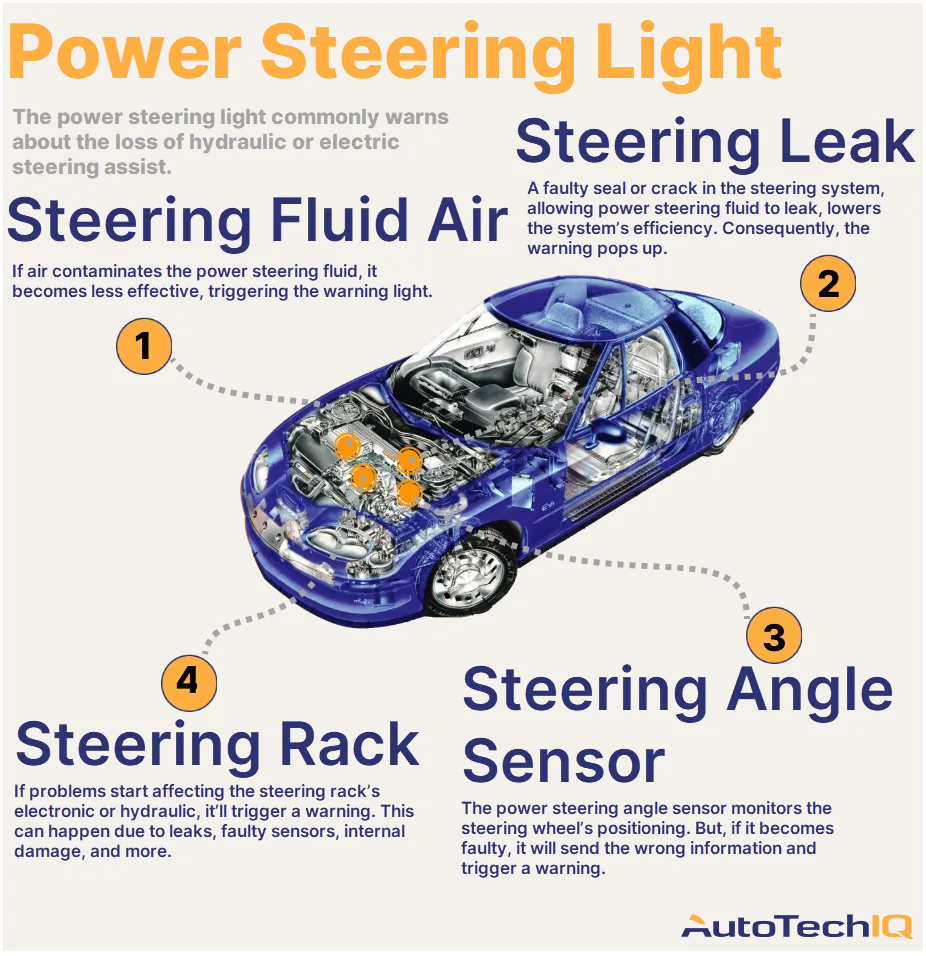Transparency example in a faulty brake pad service
A brake system inspection is the most transparent process to understand why your vehicle’s brake pads are worn out. This is because many components in the brake system affect your brake pads, meaning something might be harming them, causing overwear.
Let’s read an example of how this kind of inspection helps to service a worn brake pad.
In a scheduled service, a customer stated their car was displaying a brake warning light on the dashboard. The customer also mentioned that their vehicle was making a squealing noise when braking and seemed to be pulling to one side.
The technician initially suspected something about the brake pads. The customer asked for a brake inspection since the brake pads weren’t due for replacement yet. While inspecting, the technician found that the front right pad was too thin and greasy. Next, the expert checked around the pads, noticing that the axle seal above the wheels leaked oil, and the oil was seeping and making the pads greasy.
This means the brake pads were excessively greasy, which was causing them to be sticky in the brake discs, leading to constant partial contact. Modern vehicles typically have a sensor that triggers the brake pad warning light.
Therefore the front right pads were wearing out faster than expected due to the leaking axle seal above it..

In this case, the mechanic put the “Immediate Action” tag on the brake pads and the leaking axle seal.
